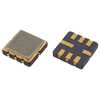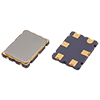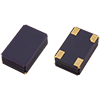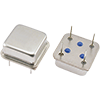The Role of Frequency Control Components in Wireless Sensor Networks
23 Apr 2024
KATIEJENKIN@GOLLEDGE.COM
In the world of wireless sensor networks, accuracy is paramount. Every data transmission relies on the precise orchestration of frequencies, ensuring that information flows seamlessly from sensor to central hub. This critical task falls to the realm of frequency control components, where mastery lies at the core of seamless communication.
Golledge Electronics is a distinguished name in frequency control technology who ensures precision in this intricate domain. With a legacy steeped in excellence, Golledge Electronics has established itself as a leading authority in providing components that form the bedrock of reliable wireless sensor networks.
We'll unravel the pivotal role played by frequency control components in shaping the reliability and accuracy of wireless sensor networks. From oscillators to SAW filters, each component acts as a watcher to ensure that data flows with unwavering precision.
In the upcoming sections, we'll delve into the nuances of these components, understanding how they contribute to the seamless operation of wireless sensor networks. With Golledge Electronics as your guide, we'll uncover the technology that underpins the future of wireless connectivity.
Understanding Wireless Sensor Networks
Wireless Sensor Networks (WSNs) stand as the backbone of modern data-driven industries, seamlessly bridging the physical and digital worlds. They consist of a multitude of autonomous sensors, dispersed across a geographical area to collaboratively collect and transmit data to a central hub or processing unit.
This dynamic network facilitates real-time monitoring and analysis, providing critical insights for a wide array of applications. From environmental monitoring to industrial automation, the capabilities of WSNs are boundless. In fact, according to industry reports, the global wireless sensor network market is projected to reach a staggering value of £9 million by 2029, underlining the impact these networks have on industries worldwide.
Each sensor node within a WSN is equipped with specialised sensors to capture various types of data, ranging from temperature and humidity to motion and light intensity. These nodes collaborate to create a robust network, communicating with each other and transmitting data to a central processing unit for analysis.
The crucial role of Frequency Control in WSNs
Wireless Sensor Networks (WSNs) rely on precise orchestration for seamless data transmission. At the heart of this precision lies frequency control, a critical component that ensures that sensor nodes within the network operate synchronously and at the correct frequencies.
A suite of frequency control products, including oscillators, quartz crystals, and SAW filters, play a pivotal role in maintaining the accuracy and sensitivity of these networks. Crystal oscillators, for instance, act as the timekeepers, ensuring that data is transmitted at the designated frequency. TCXOs offer stability even in the face of varying environmental conditions, while VCXOs allow for dynamic frequency adjustments.
The significance of frequency control in WSNs cannot be overstated. Any deviation in frequency can result in data corruption or loss, potentially compromising the integrity of the entire network. In applications where precision is imperative, such as environmental monitoring or industrial automation, reliable frequency control is the key to success.
Components that shape Network Robustness
To achieve unwavering precision in Wireless Sensor Networks (WSNs), a meticulous selection of frequency control components is critical. Each element plays a distinct role in ensuring that the network operates synchronously and at the correct frequencies. Let's explore the key components that contribute to a robust WSN.
SAW Filters (Surface Acoustic Wave Filters)
SAW filters are integral to signal processing within WSNs. By harnessing the unique properties of surface acoustic waves, these filters enhance selectivity and suppress unwanted signals. This contributes to improved noise immunity and heightened system performance.
Crystal Filters
Tailored for frequency selection and shaping, crystal filters are specialised electronic components that rely on the resonant properties of quartz crystals. They allow specific frequencies to pass through while attenuating others, ensuring that only desired signals are transmitted within the network.
Quartz Crystals
Quartz crystals serve as the bedrock of frequency control, leveraging their inherent oscillatory properties. They provide a stable and accurate reference frequency, enabling precise data transmission within WSNs. These crystals form the foundation upon which oscillators build their precise signals.
Crystal Oscillators (XOs)
Crystal oscillators are essential components that utilise the mechanical resonance of vibrating crystals to generate stable frequencies. Acting as timekeepers, XOs ensure that data is transmitted at the designated frequency, forming the backbone of accurate communication within WSNs.
Temperature-Compensated Crystal Oscillators (TCXOs)
Operating environments are dynamic, subjecting components to temperature variations. TCXOs address this challenge by integrating a temperature compensation circuit. This circuit counters the crystal's natural frequency shifts due to temperature, ensuring consistent performance across varying conditions.
Voltage-Controlled Crystal Oscillators (VCXOs)
VCXOs provide a dynamic element to frequency control. They can adjust their frequency in response to changes in applied voltage, allowing for fine-tuning of the oscillation rate. In applications where dynamic frequency adjustments are crucial, VCXOs play a pivotal role.
Oven-Controlled Crystal Oscillators (OCXOs)
When the highest level of precision is required, OCXOs step in. They create a controlled temperature environment for the crystal oscillator, minimising frequency deviation even in the face of fluctuating external conditions. OCXOs are unparalleled in stability and accuracy. OCXOs are second only to atomic clocks in their accuracy.
Challenges in maintaining frequency in Sensor Networks
While Wireless Sensor Networks (WSNs) offer unparalleled capabilities, maintaining precise frequency control poses distinct challenges. These challenges must be addressed to ensure the reliability and accuracy of data transmission within the network. Let's delve into the specific hurdles engineers face in achieving and sustaining frequency stability.
Environmental variations
WSNs often operate in diverse environments where temperature variations are inevitable. These fluctuations can directly impact the stability of frequency control components, necessitating the use of temperature-compensated solutions.
Power constraints
Many WSN deployments rely on battery-powered nodes with finite energy reserves. Frequency control components must strike a delicate balance between accuracy and power efficiency to prolong the lifespan of these nodes. Fast startup times are also crucial in maintaining low energy usage.
Signal integrity and filtering
WSNs often operate in environments with high levels of electromagnetic noise. To maintain reliable communications, specialised filters like SAW filters and crystal filters are employed to suppress unwanted signals and enhance overall signal integrity.
Scalability considerations
As WSNs grow in scale, maintaining frequency stability becomes increasingly complex. Ensuring that each node operates at the correct frequency, while remaining synchronised with other nodes, requires careful planning and coordination.
Cost-effective solutions
Cost considerations are important in any deployment. Balancing the need for high-quality frequency control components with budget constraints requires careful selection and procurement strategies.
Best practices for Frequency Control in Wireless Networks
To maintain precise frequency control for seamless operation of WSNs, engineers can implement a set of best practices that ensure accuracy, reliability, and efficiency. Here are the key strategies to uphold frequency stability in WSNs:
- Choose appropriate frequency control products based on the specific requirements of the network. Consider factors such as temperature stability, power consumption, and frequency accuracy to ensure compatibility with the application.
- Employ Temperature-Compensated Crystal Oscillators (TCXOs) to counteract the effects of temperature fluctuations. Implementing TCXOs provides a critical layer of stability, particularly in environments prone to varying temperatures.
- Implement EMI/RFI shielding techniques toprotect sensitive frequency control components from electromagnetic interference (EMI) and radiofrequency interference (RFI). This prevents external influences from corrupting signals.
- Utilise synchronisation protocols to ensure that sensor nodes operate in coordination. This facilitates accurate timestamping of events and enables precise data correlation.
- Optimise power consumption and choose frequency control components that strike a balance between accuracy and power efficiency. This is crucial for extending the battery life of sensor nodes, especially in applications with limited power resources.
- Conduct regular periodic calibration of frequency control components to maintain their accuracy over time. This proactive approach prevents drift and ensures continued reliability.
- Thoroughly testand validate frequency control components before deployment to ensure they meet specified performance criteria. This includes conducting tests in representative environmental conditions.
- Maintain detailed records of component specifications, calibration schedules, and any adjustments made. This serves as a reference for troubleshooting and future maintenance.
Empowering the future of Wireless Sensor Networks with Golledge
In the intricate world of wireless sensor networks, precision is the number one priority. Every byte of data transmitted relies on a symphony of frequencies conducted with absolute accuracy. Behind this orchestration are frequency control components, the unsung heroes of seamless communication.
As we've unraveled the intricacies of these components, we've uncovered the technology that propels the future of wireless connectivity. With Golledge Electronics as your trusted partner, you're not just investing in components; you're investing in the seamless exchange of critical information, powering industries and innovations on a global scale.
Our meticulously crafted frequency control products are the linchpin of networks that can't afford to miss a beat. With a focus on excellence and an unwavering commitment to quality, Golledge Electronics is your compass in the complex realm of wireless sensor networks.
Our knowledgeable and professional team is on-hand to guide you in selecting the perfect product for your requirements, ensuring that your application not only succeeds, but excels.
Contact Golledge Electronics today for expert advice or browse our extensive catalogue of frequency control products. Elevate your wireless sensor network to the pinnacle of precision with Golledge Electronics by your side.






